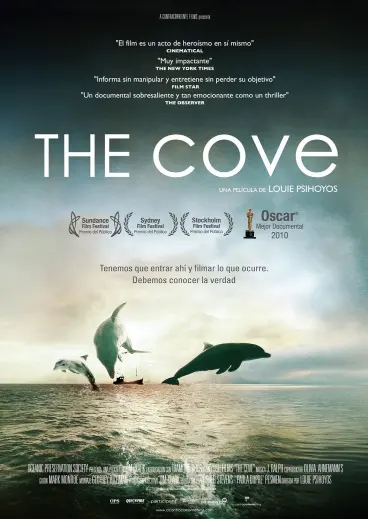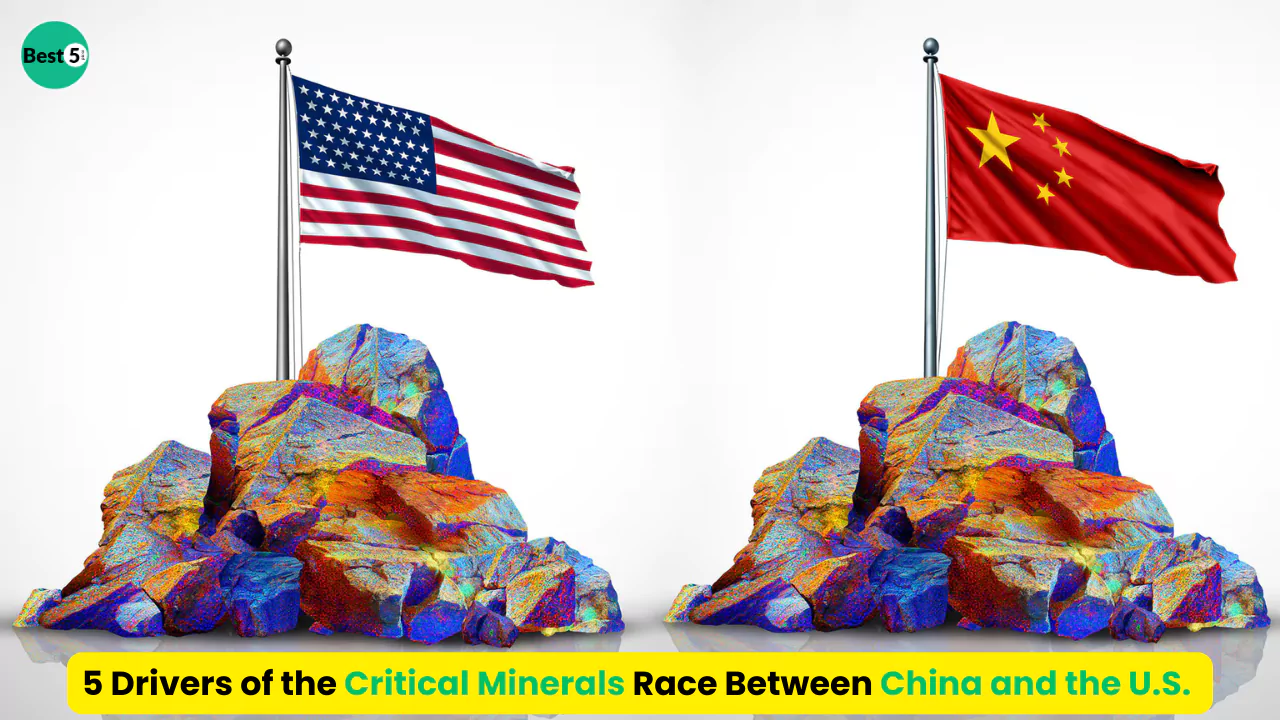Discover the world’s most captivating documentaries in this curated list of the “5 Most Captivating Documentaries.”
From gripping true crime stories to awe-inspiring nature documentaries, this collection offers a diverse range of compelling narratives that will leave you both informed and entertained.
Explore the depth of human experiences and the wonders of the natural world through these thought-provoking documentaries that have captivated audiences worldwide.
I. Introduction
Expand your horizons with these 5 Most Captivating Documentaries that offer a unique and thought-provoking view of the world.
Discover the wonders of nature in ‘Planet Earth’ (2006), delve into the ethical dilemmas of dolphin hunting in ‘The Cove’ (2009), and uncover the truth about killer whale captivity in ‘Blackfish’ (2013).
Explore the controversial topic of government surveillance in ‘Citizenfour’ (2014) and immerse yourself in the art of sushi craftsmanship with ‘Jiro Dreams of Sushi’ (2011).
These documentaries will leave you informed, inspired, and ready to broaden your perspective on various subjects. Start your journey today!
A. Importance of documentaries in expanding horizons
Documentaries have long been recognized as a powerful medium for expanding horizons and broadening one’s understanding of the world.
Unlike fictional films, documentaries offer a glimpse into real-life events, people, and issues, providing viewers with an opportunity to engage with diverse perspectives, cultures, and ideas.
By delving deep into various subjects, documentaries have the ability to educate, challenge preconceived notions, and ignite curiosity in viewers.
Through their immersive storytelling and informative narratives, documentaries bring forth a range of topics, from nature and science to social and political issues.
They shed light on untold stories, expose injustices, and delve into the complexities of our world.
This unique blend of entertainment and education has the potential to create a profound impact on viewers, expanding their horizons and fostering a deeper understanding of the human experience.
B. Overview of the article’s purpose
The purpose of this article is to highlight five captivating documentaries that have the power to expand horizons and leave a lasting impact on viewers.
Each documentary offers a distinct perspective, explores compelling subject matter, and invites viewers to contemplate and reflect on the world around them.
From the breathtaking natural wonders captured in “Planet Earth” to the thought-provoking revelations of “Citizenfour” on government surveillance, these documentaries have been carefully selected for their ability to captivate audiences and challenge conventional thinking.
By showcasing diverse themes such as wildlife conservation, ethical dilemmas, and personal mastery, this article aims to inspire readers to embark on an enriching journey through the power of documentary filmmaking.
By delving into the synopses, themes, and impacts of each documentary, readers will gain a deeper appreciation for the medium’s ability to broaden perspectives and foster a greater understanding of the complex realities that shape our world.
Whether you are a seasoned documentary enthusiast or new to the genre, these five documentaries are sure to ignite curiosity, spark meaningful conversations, and expand your horizons in ways you never imagined.
5. Jiro Dreams of Sushi (2011)

5.1 Introduction to the film’s exploration of sushi craftsmanship
“Jiro Dreams of Sushi“ is a mesmerizing documentary directed by David Gelb that delves into the world of sushi craftsmanship and the pursuit of culinary perfection.
The film primarily focuses on the legendary sushi chef, Jiro Ono, an 85-year-old master who runs a 10-seat sushi restaurant called Sukiyabashi Jiro, located in a Tokyo subway station.
1. Jiro’s Approach to Sushi
The documentary immerses viewers into Jiro’s unique approach to sushi making, showcasing his unwavering dedication and relentless pursuit of excellence.
Jiro’s philosophy revolves around simplicity, attention to detail, and an emphasis on quality ingredients.
Through interviews and stunning visuals, the film captures the essence of Jiro’s artistry and the precision that goes into each piece of sushi he creates.
2. The Craftsmanship and Techniques
Viewers are taken on a sensory journey as they witness the meticulous techniques employed by Jiro and his team.
From selecting the freshest fish at the market to the art of rice preparation and the delicate process of shaping and presenting each sushi piece, the documentary showcases the depth of skill and knowledge required to master this ancient craft.
3. The Legacy of Sukiyabashi Jiro
The film delves into the legacy of Sukiyabashi Jiro and its impact on the culinary world.
Despite its modest size and unassuming location, the restaurant has been awarded three Michelin stars, making it one of the most prestigious sushi establishments in the world.
The documentary explores the restaurant’s rich history, including its notable clientele and the rigorous training that aspiring sushi chefs must undergo to work under Jiro’s tutelage.
4. Jiro’s Personal Journey and Philosophy
Beyond the art of sushi-making, “Jiro Dreams of Sushi” delves into Jiro’s personal journey and philosophy.
The film provides a glimpse into his relentless work ethic, unwavering commitment to perfection, and the sacrifices he has made to achieve his culinary vision.
Jiro’s passion for his craft becomes an inspiring testament to the pursuit of one’s dreams and the constant pursuit of improvement.
5. Cultural Significance and Reflection
The documentary also serves as a reflection on the cultural significance of sushi in Japan and its global influence.
It explores the traditional values and practices associated with sushi-making, highlighting the deep-rooted respect for ingredients, the chef’s role as a custodian of culinary heritage, and the symbiotic relationship between chefs and their patrons.
“Jiro Dreams of Sushi” is not only a visual feast but also a thought-provoking exploration of dedication, mastery, and the relentless pursuit of excellence.
It offers viewers a deeper appreciation for the artistry behind sushi craftsmanship, while also providing insights into broader themes of passion, legacy, and the relentless pursuit of perfection.
5.2 Portrait of renowned sushi chef Jiro Ono
In the captivating documentary “Jiro Dreams of Sushi,” directed by David Gelb, viewers are taken on a mesmerizing journey into the world of sushi craftsmanship through the lens of the legendary sushi chef Jiro Ono.
This subtopic delves into the details of the portrait painted of Jiro Ono, showcasing his dedication, passion, and unwavering pursuit of perfection.
1. Introduction to Jiro Ono:
- Background and early influences: The documentary provides insights into Jiro Ono’s background, including his humble beginnings and the early influences that shaped his passion for sushi.
2. Mastery and Perfection:
- Sushi as an art form: Jiro Ono’s approach to sushi goes beyond mere culinary expertise. He sees sushi-making as an art form, emphasizing the importance of every minute detail, from the selection of ingredients to the precision in preparation and presentation.
- Pursuit of perfection: Jiro Ono’s relentless pursuit of perfection is highlighted throughout the documentary. He spends years mastering the art of sushi, constantly seeking ways to improve his techniques and refine his creations. His dedication and attention to detail are awe-inspiring.
3. Work Ethic and Discipline:
- Daily routine and dedication: The documentary showcases Jiro Ono’s rigorous daily routine, which includes sourcing the finest ingredients, meticulous preparation, and serving customers in his renowned sushi restaurant, Sukiyabashi Jiro. His unwavering commitment to his craft is an embodiment of discipline and hard work.
- Success and recognition: Jiro Ono’s dedication to his work has garnered him international recognition, including three Michelin stars, making his restaurant one of the most prestigious sushi establishments in the world. The documentary highlights his journey to success and the sacrifices he made along the way.
4. Legacy and Passing on Tradition:
- Jiro’s relationship with his sons: The film also explores Jiro Ono’s relationship with his two sons, who are also sushi chefs. It delves into the expectations placed on them to carry on the family legacy and uphold the standards set by their father.
- The importance of apprenticeship: Jiro Ono emphasizes the significance of apprenticeship and passing on the knowledge and skills to the next generation. The documentary provides insights into the rigorous training process aspiring sushi chefs must undergo under Jiro’s guidance.
5. Reflection on Life and Purpose:
- Philosophy and wisdom: Jiro Ono’s reflections on life, success, and the pursuit of excellence offer profound insights. He shares his philosophy of constantly striving for improvement and finding purpose and fulfillment in one’s work.
- Personal anecdotes: Through personal anecdotes and interviews, the documentary captures the essence of Jiro Ono’s wisdom and the lessons he has learned throughout his extraordinary culinary journey.
In “Jiro Dreams of Sushi,” viewers are presented with an intimate portrayal of Jiro Ono, a remarkable figure in the world of sushi, whose relentless pursuit of perfection and unwavering dedication to his craft serve as an inspiration to all who watch.
The film offers a glimpse into the intricacies of his art, his philosophy on life and work, and his lasting impact on the culinary world, leaving audiences with a deeper appreciation for the mastery and passion that go into the creation of exceptional cuisine.
5.3 Reflection on dedication, mastery, and pursuit of perfection
- Introduction to the film’s exploration of dedication and mastery:
a. Overview of the documentary’s central theme: “Jiro Dreams of Sushi” is a captivating documentary that delves into the world of Jiro Ono, an 85-year-old sushi master in Tokyo, Japan.
b. Presentation of Jiro Ono’s unwavering dedication: The film highlights Jiro Ono’s lifelong commitment to perfecting his craft and the pursuit of sushi perfection.
- Portrait of renowned sushi chef Jiro Ono:
a. Background of Jiro Ono’s culinary career: The documentary provides insight into Jiro Ono’s background as a sushi chef and his rise to prominence within the culinary world.
b. Examination of Jiro Ono’s meticulous approach: Viewers are introduced to Jiro Ono’s meticulous attention to detail, from the selection of ingredients to the precision in which he prepares and presents each sushi dish.
c. Insights into Jiro Ono’s work ethic: The film offers glimpses into Jiro Ono’s relentless work ethic, including his rigorous training methods and the high standards he sets for himself and his apprentices.
- Depiction of the pursuit of perfection:
a. Exploration of Jiro Ono’s pursuit of perfection: The documentary showcases Jiro Ono’s relentless pursuit of perfecting his sushi, always striving to surpass his own standards and create the ultimate dining experience for his customers.
b. Reflection on the significance of perfection: The film prompts viewers to contemplate the meaning and value of perfection in one’s work, emphasizing the dedication and discipline required to achieve it.
c. Examination of the role of tradition and innovation: The documentary explores the delicate balance between tradition and innovation in Jiro Ono’s approach to sushi-making, shedding light on how he maintains the essence of his craft while embracing subtle modifications.
- Lessons and inspirations from “Jiro Dreams of Sushi”:
a. Appreciation for the pursuit of excellence: The documentary inspires viewers to value the dedication and pursuit of excellence in any field, recognizing the transformative power of relentless commitment.
b. Reflection on the importance of passion: Through Jiro Ono’s unwavering passion for sushi-making, the film underscores the significance of finding and nurturing one’s passion in life.
c. Implications for personal growth and mastery: “Jiro Dreams of Sushi” encourages viewers to reflect on their own aspirations and consider the dedication and mastery required to achieve their goals, regardless of the field they choose.
- Impact on the viewer’s perspective:
a. Transformation of perception towards sushi: The documentary can lead to a newfound appreciation and understanding of the artistry behind sushi-making, encouraging viewers to approach sushi dining with a deeper sense of respect and admiration.
b. Broadening of perspectives on dedication and mastery: “Jiro Dreams of Sushi” challenges conventional notions of success and dedication, broadening viewers’ perspectives on what it means to truly excel in one’s chosen field.
c. Inspiration for personal and professional growth: The film serves as a source of inspiration for individuals seeking personal and professional growth, reminding them of the importance of dedication, perseverance, and the pursuit of perfection.
“Jiro Dreams of Sushi” offers a captivating exploration of dedication, mastery, and the pursuit of perfection through the lens of renowned sushi chef Jiro Ono.
By delving into Jiro Ono’s unwavering commitment to his craft, the documentary provides valuable insights and inspiration for viewers to reflect on their own aspirations and approach to excellence.
4. Citizenfour (2014)

4.1 Overview of the film’s focus on surveillance and privacy
“Citizenfour“ is a compelling documentary that delves into the controversial topics of surveillance and privacy in the digital age.
Directed by Laura Poitras, the film offers an intimate and eye-opening look at the revelations made by former National Security Agency (NSA) contractor Edward Snowden in 2013.
1. Edward Snowden and the NSA Leaks
a. The film introduces Edward Snowden, a former intelligence contractor who leaked classified documents from the NSA to the media.
b. It explores Snowden’s motivations for revealing the extent of global surveillance programs carried out by intelligence agencies.
c. The film provides a glimpse into the process of how Snowden reached out to filmmaker Laura Poitras and journalist Glenn Greenwald to expose the surveillance programs.
2. Government Surveillance and Its Implications
a. “Citizenfour” sheds light on the vast scope and reach of government surveillance, not only in the United States but also globally.
b. It explores the collection and analysis of mass data, including phone records, emails, and internet communications.
c. The film raises concerns about the potential violation of privacy, erosion of civil liberties, and the balance between security and individual rights.
3. Whistleblowing and its Consequences
a. The documentary delves into the moral dilemma faced by Edward Snowden as he decided to become a whistleblower.
b. It examines the repercussions Snowden faced, including potential legal consequences and the loss of his freedom.
c. The film also highlights the public debate ignited by the leaks, with opinions divided on whether Snowden’s actions were heroic or treasonous.
4. Impact on Public Discourse and Policy
a. “Citizenfour” explores the immediate and long-term effects of Snowden’s revelations on public perception and discourse surrounding surveillance and privacy.
b. It examines the debates that arose about government accountability, transparency, and the protection of civil liberties.
c. The film also discusses the reforms and policy changes that were prompted by the disclosures, both in the United States and internationally.
5. Personal Reflections and Ethical Questions
a. Through interviews and conversations captured in the film, “Citizenfour” invites viewers to reflect on their own relationship with privacy and surveillance.
b. It raises important ethical questions about the trade-offs between security and privacy in the modern digital landscape.
c. The documentary encourages critical thinking and prompts discussions on the role of individuals, governments, and technology companies in safeguarding privacy rights.
“Citizenfour” stands as a thought-provoking documentary that challenges viewers to reconsider their understanding of surveillance, privacy, and the implications they have on society.
It serves as a catalyst for important conversations about personal freedoms, government transparency, and the impact of technology on our lives.
4.2 Discussion of Edward Snowden’s revelations
In the thought-provoking documentary “Citizenfour,” directed by Laura Poitras, the focus is on one of the most significant whistleblowers in modern history – Edward Snowden.
The film provides an intimate and behind-the-scenes look at Snowden’s decision to expose classified information about extensive surveillance programs conducted by the United States National Security Agency (NSA).
1. Edward Snowden’s Background and Actions:
- Introduction to Edward Snowden, a former CIA employee and NSA contractor
- Snowden’s motivation for leaking classified documents
- The risks and consequences he faced by revealing the information
2. The Revelations:
- Description of the classified information leaked by Snowden
- Explanations of the NSA’s mass surveillance programs, including PRISM and XKeyscore
- Discussion of the impact on privacy rights and civil liberties
3. Government Surveillance and Public Reaction:
- Examination of the widespread public debate triggered by Snowden’s revelations
- Analysis of the reactions from government officials, journalists, and the general public
- Exploration of the ethical and legal implications of government surveillance
4. The Filmmaker’s Perspective:
- Poitras’s decision to document Snowden’s story and her role in the film
- Challenges faced by the filmmaker in protecting the anonymity of sources
- Poitras’s own experiences with government surveillance and its influence on the documentary
5. Global Impact and Legacy:
- Discussion of the international ramifications of Snowden’s leaks
- Evaluation of the reforms and policy changes that occurred as a result of the revelations
- Reflection on the lasting impact and ongoing discussions about privacy, surveillance, and whistleblowing
“Citizenfour” provides viewers with an intimate portrayal of Edward Snowden’s journey and his decision to disclose sensitive information to the public.
The documentary invites audiences to critically evaluate the balance between national security and personal privacy, igniting discussions about government surveillance practices and their implications for individual rights and democracy.
By shedding light on the complex issues surrounding surveillance and whistleblowing, “Citizenfour” serves as a catalyst for expanding viewers’ understanding of the challenges faced in the digital age.
4.3 Impact on public discourse surrounding government surveillance
“Citizenfour” is a groundbreaking documentary that had a profound impact on public discourse surrounding government surveillance.
Directed by Laura Poitras, the film focuses on the events surrounding Edward Snowden’s disclosure of classified National Security Agency (NSA) documents in 2013.
Here are the full details of how “Citizenfour” influenced the public discourse on government surveillance:
1. Exposing Mass Surveillance Practices:
“Citizenfour” provided a unique insight into the extent of mass surveillance conducted by intelligence agencies, particularly the NSA.
Through interviews with Edward Snowden and the leaked classified documents, the documentary revealed the widespread and indiscriminate collection of personal data, including phone records and internet communications, by government agencies.
2. Questioning Government Privacy Invasion:
The documentary sparked a public debate on the balance between national security and individual privacy rights.
By exposing the invasive practices of government surveillance, “Citizenfour” raised critical questions about the legitimacy and necessity of such surveillance programs, igniting discussions on the implications for civil liberties and democracy.
3. Whistleblower as a Hero Figure:
Edward Snowden’s portrayal in the film as a whistleblower and his decision to expose classified information generated significant support and admiration from some viewers.
Many saw him as a courageous figure challenging government overreach and advocating for transparency.
The documentary humanized Snowden, leading to discussions about the importance of whistleblowers in holding powerful institutions accountable.
4. International Impact and Government Reactions:
“Citizenfour” received widespread global attention, exposing the extent of surveillance practices not just in the United States but also in other countries.
The revelations triggered discussions about the collaboration between intelligence agencies worldwide and the implications for international relationships.
Governments and policymakers were forced to respond to the public outcry, with some implementing reforms or revisiting surveillance laws.
5. Influence on Public Perception:
The documentary played a significant role in shaping public perception and understanding of government surveillance.
It made a complex and technical topic accessible to a wider audience, encouraging individuals to educate themselves about privacy issues and engage in conversations about surveillance, data privacy, and individual rights.
It helped foster a heightened awareness of the potential threats to privacy in the digital age.
6. Legal and Policy Reforms:
As a result of the public discourse sparked by “Citizenfour” and the subsequent revelations, there were calls for legal and policy reforms.
The documentary influenced public opinion and advocacy efforts, leading to increased scrutiny of surveillance programs, court challenges, and legislative actions aimed at protecting individual privacy rights and ensuring greater transparency and accountability in government surveillance practices.
“Citizenfour” had a significant impact on public discourse surrounding government surveillance. By exposing mass surveillance practices, questioning privacy invasion, portraying Edward Snowden as a whistleblower, triggering international debates, influencing public perception, and calling for legal and policy reforms.
The documentary played a crucial role in raising awareness about the complexities and implications of government surveillance in the digital age.
So The 5 Most Captivating Documentaries That Will Expand Your Horizons journey our next documentary is “Jiro Dreams of Sushi” (2011).
3. Blackfish (2013)

3.1 Introduction to the film’s central theme
“Blackfish” is a thought-provoking documentary released in 2013 that shines a spotlight on the captivity of killer whales, particularly focusing on their experiences at SeaWorld.
The film, directed by Gabriela Cowperthwaite, delves into the lives of these majestic creatures and the consequences of keeping them in confinement for entertainment purposes.
1. Background on the film:
- Brief overview of SeaWorld’s history and its use of killer whales for entertainment
- Introduction to Tilikum, a prominent killer whale featured in the film
2. Unveiling the dark side of captivity:
- Examination of the living conditions and treatment of killer whales in captivity
- Interviews with former SeaWorld trainers sharing their experiences and concerns
- Presentation of scientific research and expert opinions on the negative impacts of confinement
3. Capturing the consequences:
- In-depth exploration of Tilikum’s involvement in several fatal incidents, including the tragic death of SeaWorld trainer Dawn Brancheau
- Analysis of the psychological and emotional toll on killer whales living in captivity
- Discussion of the potential causes behind aggressive behavior exhibited by captive killer whales
4. Ethical and moral implications:
- Investigation into the ethics of using intelligent and social creatures for entertainment
- Examination of SeaWorld’s response to the film’s allegations and subsequent public backlash
- Reflection on the responsibility of humans towards the well-being of animals in captivity
5. Impact and aftermath:
- Discussion of the documentary’s influence on public perception and awareness of killer whale captivity
- Overview of SeaWorld’s changing policies and practices following the film’s release
- – Examination of the broader impact on the captive marine mammal industry and its future implications
“Blackfish” ignited a global conversation about animal welfare and the ethics of keeping intelligent marine mammals in captivity.
By shedding light on the dark side of entertainment parks, the documentary challenges viewers to reconsider the way we interact with and understand these remarkable creatures.
3.2 Examination of killer whale captivity and its consequences
1. The dark side of killer whale captivity:
- Introduction to the controversial practice of keeping killer whales in captivity
- Detailed exploration of the captive orca industry, primarily focusing on SeaWorld
- Depiction of the physical and psychological impact of captivity on killer whales
2. Orca behavior in the wild vs. captivity:
- Comparison of killer whale behavior in their natural habitat with their behavior in captivity
- Examination of the negative effects of confinement, limited space, and separation from their families and social groups
- Highlighting the behavioral abnormalities and stress-related health issues exhibited by captive orcas
3. Tragic incidents and their aftermath:
- Investigation of high-profile incidents involving captive orcas, such as the death of SeaWorld trainer Dawn Brancheau
- Analysis of the causes and circumstances surrounding these incidents, including the aggression of captive orcas
- Discussion of the repercussions for both the trainers and the whales involved, as well as the public’s response
4. Ethical and conservation concerns:
- Exploration of the ethical considerations surrounding the capture and confinement of intelligent and socially complex creatures like killer whales
- Examination of the impact of the captive orca industry on wild populations and conservation efforts
- Interviews with experts, activists, and former trainers providing insights into the broader implications and potential alternatives to captivity
5. Shifting public perception and policy changes:
- Analysis of the documentary’s impact on public opinion and awareness about the issue of killer whale captivity
- Discussion of the subsequent decline in attendance and financial performance of marine parks with orca shows
- Examination of the changes in regulations and policies regarding killer whale captivity, both at SeaWorld and globally
6. Call for change and activism:
- Presentation of the documentary as a catalyst for animal rights activism and advocacy against killer whale captivity
- Highlighting the efforts of organizations and individuals working to protect marine life and promote responsible tourism
- Encouragement for viewers to take action, support conservation initiatives, and make informed choices when it comes to marine entertainment.
3.3 Influence on public perception of marine parks
1. Exposing the Dark Side of Marine Parks:
a. “Blackfish” sheds light on the treatment of killer whales, particularly focusing on Tilikum, a captive orca responsible for the deaths of several trainers.
b. The documentary reveals the consequences of keeping these intelligent and social creatures confined in small tanks, leading to psychological distress and aggression.
2. Raising Awareness and Empathy:
a. “Blackfish” presents emotional accounts from former trainers and experts, highlighting the deep bond between orcas and their social structures in the wild.
b. By humanizing the orcas and showcasing their suffering, the documentary evokes empathy and encourages viewers to question the ethics of keeping marine animals in captivity.
3. Challenging the Entertainment Industry:
a. The film exposes the practices of marine parks, specifically SeaWorld, revealing the contrast between the glamorous public shows and the behind-the-scenes reality.
b. Viewers witness the physical and emotional toll on captive orcas and question the morality of using these animals for entertainment purposes.
4. Changing Public Perception:
a. “Blackfish” sparked widespread public outrage and led to a significant shift in public perception of marine parks and the treatment of marine animals.
b. The documentary prompted individuals to reconsider their support for these institutions and demand greater accountability and improved conditions for captive animals.
5. Legislative and Industry Impact:
a. As a result of the film’s impact, various legislative actions and initiatives were introduced to address the treatment of captive marine animals.
b. The documentary triggered a decline in attendance and revenue for marine parks, forcing them to reevaluate their practices and make changes to improve the welfare of animals in captivity.
6. Lasting Legacy:
a. “Blackfish” continues to be a powerful tool for education and advocacy, inspiring further exploration and debate on animal welfare and ethics.
b. The documentary’s influence extends beyond its initial release, encouraging ongoing efforts to protect marine life and promote more responsible and sustainable practices.
The documentary “Blackfish” had a profound effect on public perception of marine parks, challenging the entertainment industry and raising awareness about the treatment of captive killer whales.
By exposing the dark side of marine parks and invoking empathy, the film led to a significant shift in public opinion and sparked legislative and industry changes.
Its lasting legacy continues to inspire conversations and actions aimed at improving the welfare of marine animals and promoting a more ethical approach to their captivity.
So The 5 Most Captivating Documentaries That Will Expand Your Horizons journey our next documentary is “Citizenfour” (2014).
2. The Cove (2009)

2.1 Brief summary of the film’s subject matter
“The Cove“ is a compelling and thought-provoking documentary that delves into the shocking reality of dolphin hunting in Taiji, Japan.
Directed by Louie Psihoyos, the film follows a team of activists, including former dolphin trainer Ric O’Barry, as they uncover and expose the brutal practices taking place in a hidden cove.
The film begins by shedding light on the picturesque coastal town of Taiji, renowned for its stunning natural beauty.
However, beneath the surface lies a dark secret – the annual dolphin hunt that takes place in a secluded cove.
The documentary exposes this hidden and heavily guarded location where dolphins are herded and killed for various purposes, including entertainment and meat consumption.
“The Cove” combines investigative journalism with covert operations as the team of activists works tirelessly to capture the gruesome reality of the dolphin slaughter.
They face numerous challenges, including evading the tight security measures put in place by the local authorities and the powerful dolphin hunting industry.
The film showcases the inherent cruelty involved in dolphin hunting, highlighting the suffering and trauma inflicted upon these intelligent and sensitive marine creatures.
It provides a window into the ruthless methods employed by the hunters, including the use of loud underwater noise to disorient and herd the dolphins into the cove.
Once trapped, the dolphins are ruthlessly killed, often with gruesome techniques, their bodies hidden from public view.
Beyond the direct impact on the dolphins, “The Cove” also explores the broader implications of the dolphin hunting industry.
It examines the risks associated with consuming dolphin meat, which contains high levels of toxic mercury and poses a significant health hazard to those who consume it unknowingly.
By documenting and exposing these practices, “The Cove” aims to raise awareness about the dolphin hunting industry and ignite a global conversation about animal cruelty, environmental conservation, and ethical considerations related to marine life.
The film received critical acclaim for its powerful storytelling and compelling evidence, winning the Academy Award for Best Documentary Feature in 2010.
It sparked international outrage and led to increased scrutiny of dolphin hunting practices, urging governments and individuals to take action and address this pressing issue.
“The Cove” serves as a powerful reminder of the importance of protecting our oceans and the diverse marine life that inhabits them.
It encourages viewers to question the ethical and environmental implications of human activities that harm and exploit these sentient beings, ultimately broadening our horizons and fostering a deeper sense of empathy and responsibility towards the natural world.
2.2 Exposure of Dolphin Hunting in Japan
“The Cove” is a groundbreaking documentary that sheds light on the controversial issue of dolphin hunting in Japan.
Directed by Louie Psihoyos, the film follows a team of activists, including former dolphin trainer Ric O’Barry, as they infiltrate a hidden cove in Taiji, Japan.
The film’s primary objective is to expose and raise awareness about the brutal and secretive practice of dolphin hunting that takes place in the cove.
1. The Dolphin Hunting Industry:
a. The documentary delves into the lucrative dolphin hunting industry in Japan, highlighting the financial incentives behind capturing and selling dolphins to marine parks and aquariums worldwide.
b. It explores the demand for live dolphins, particularly for entertainment purposes, and how this fuels the hunting operations in Taiji and other regions in Japan.
2. The Cove:
a. The film reveals the specific location known as “the cove” in Taiji, where dolphins are herded into a small bay and then brutally slaughtered. This location has been deliberately hidden from public view, making the documentary’s footage all the more shocking.
b. The filmmakers use hidden cameras and advanced surveillance techniques to document the hunting process, capturing the grim reality of dolphins being corralled, stabbed, and killed in large numbers.
3. Environmental Impact:
a. “The Cove” also highlights the detrimental environmental impact of dolphin hunting. It discusses the effects of mercury poisoning due to the consumption of contaminated dolphin meat by the local population, raising concerns about public health.
b. The film emphasizes the importance of dolphins within marine ecosystems and the broader implications of their depletion due to hunting practices.
4. Ethical Concerns:
a. The documentary raises profound ethical questions about the treatment of intelligent and sentient creatures. It examines the cognitive abilities and emotional lives of dolphins, challenging the justifications for their captivity and slaughter.
b. Through interviews with experts, including marine biologists and activists, the film explores the moral responsibility humans have towards these highly intelligent marine mammals.
5. Activism and Awareness:
a. “The Cove” serves as a call to action, inspiring viewers to get involved and take a stand against dolphin hunting and the captivity of marine animals.
b. The film showcases the power of grassroots activism, demonstrating how a dedicated team can make a difference by bringing international attention to an issue that was previously hidden.
“The Cove” has had a significant impact on public awareness and international discussions surrounding dolphin hunting and marine conservation. It has sparked debates about the ethics of using dolphins for entertainment purposes and the need for stricter regulations and protections for marine wildlife.
The film’s exposure of the dolphin hunting industry in Japan continues to raise awareness and encourage efforts to protect these intelligent creatures and their natural habitats.
2.3 Ethical and environmental implications discussed
“The Cove” is a thought-provoking documentary that delves into the ethical and environmental implications of dolphin hunting in Japan.
Directed by Louie Psihoyos, the film follows an elite team of activists, filmmakers, and divers who embark on a covert mission to expose a hidden cove in Taiji, Japan.
This cove serves as the site where thousands of dolphins are ruthlessly hunted and captured for various purposes, including the entertainment industry.
1. Exposing the Inhumane Treatment of Dolphins:
“The Cove” sheds light on the brutal methods used in dolphin hunting.
The documentary captures the heart-wrenching scenes of dolphins being herded into the cove and slaughtered, often through methods that result in prolonged suffering.
This raises significant ethical concerns regarding the treatment of highly intelligent and sentient creatures.
2. Impact on Marine Ecosystems:
The film also explores the environmental implications of dolphin hunting.
Dolphins are apex predators and play a crucial role in maintaining the balance of marine ecosystems.
By removing large numbers of dolphins from the wild, the delicate ecological equilibrium is disrupted.
“The Cove” highlights how the depletion of dolphin populations can have cascading effects on the marine food chain and overall biodiversity.
3. Controversies Surrounding Captivity:
“The Cove” delves into the controversial issue of dolphin captivity.
It exposes the connection between dolphin hunting and the global trade of live dolphins to marine parks and aquariums.
The documentary questions the ethical implications of keeping intelligent and social creatures in captivity for human entertainment, emphasizing the detrimental effects it has on the well-being and natural behavior of dolphins.
4. Cultural Practices and Advocacy:
The documentary navigates the cultural aspect surrounding dolphin hunting in Japan.
It seeks to create awareness without passing judgment on an entire nation’s practices.
The film highlights the efforts of passionate activists, both from Japan and around the world, who aim to bring attention to the issue, raise public awareness, and advocate for change.
5. Promoting Conservation and Activism:
“The Cove” encourages viewers to take action and become advocates for marine conservation.
The film provides information on organizations and initiatives dedicated to protecting dolphins and their habitats.
By shedding light on the issue, the documentary inspires viewers to contribute to the preservation of marine life and support efforts that promote sustainable practices and responsible tourism.
“The Cove” goes beyond a mere exposé of dolphin hunting; it delves into the ethical dilemmas and environmental consequences associated with this practice.
The documentary invites viewers to critically reflect on the treatment of dolphins.
The impact on marine ecosystems, and the potential for positive change through conservation efforts.
By highlighting these ethical and environmental implications, “The Cove” prompts audiences to expand their horizons and engage in discussions about the intersection of culture, ethics, and environmental responsibility.
So The 5 Most Captivating Documentaries That Will Expand Your Horizons journey our next documentary is “Blackfish” (2013).
1. Planet Earth (2006)

1.1 Synopsis of the series
“Planet Earth“ is a groundbreaking nature documentary series that was first released in 2006.
Produced by the British Broadcasting Corporation (BBC) and narrated by Sir David Attenborough, the series takes viewers on an awe-inspiring journey across the globe, showcasing the planet’s most remarkable ecosystems and wildlife.
1. Episode 1: “From Pole to Pole”
- Introduction to the series, highlighting the diversity of life on Earth.
- Exploration of the polar regions, including the Arctic and Antarctic.
- Features wildlife such as polar bears, penguins, and seals, showcasing their adaptations to survive in extreme conditions.
2. Episode 2: “Mountains”
- Focuses on the world’s majestic mountain ranges, from the Himalayas to the Rockies.
- Reveals the harsh environments and the unique species that inhabit these regions, including snow leopards, golden eagles, and mountain goats.
3. Episode 3: “Freshwater”
- Explores the importance of freshwater ecosystems, such as rivers, lakes, and wetlands.
- Highlights the diverse aquatic life, including fish, amphibians, and water birds, while addressing the challenges they face due to pollution and habitat destruction.
4. Episode 4: “Caves”
- Takes viewers underground to explore the mysterious and hidden world of caves.
- Showcases unique geological formations and the extraordinary creatures that have adapted to life in darkness, such as cave-dwelling bats and blind cavefish.
5. Episode 5: “Deserts”
- Sheds light on the arid and unforgiving landscapes of deserts around the world.
- Reveals the strategies employed by desert animals to cope with extreme heat and scarcity of water, including camels, scorpions, and desert foxes.
6. Episode 6: “Ice Worlds”
- Focuses on the Earth’s frozen realms, including glaciers, icebergs, and the polar ice caps.
- Explores the adaptations of animals like polar bears, walruses, and emperor penguins to survive in icy conditions.
7. Episode 7: “Great Plains”
- Showcases the vast grasslands of the world, such as the African savannah and American prairies.
- Highlights the diverse wildlife that thrives in these open landscapes, including lions, elephants, gazelles, and bison.
8. Episode 8: “Jungles”
- Immerses viewers in the lush and biodiverse jungles of the tropics.
- Reveals the incredible variety of plant and animal species, from colorful birds and monkeys to insects and rare orchids.
9. Episode 9: “Shallow Seas”
- Explores the vibrant underwater ecosystems found in shallow seas and coral reefs.
- Showcases the beauty and diversity of marine life, including coral formations, dolphins, sharks, and sea turtles.
10. Episode 10: “Seasonal Forests”
- Highlights the changes that occur in forests throughout the seasons.
- Focuses on the interactions between animals like bears, birds, and deer and their forest habitats.
“Planet Earth” offers breathtaking visuals and captivating storytelling, providing viewers with a deeper understanding of the natural world and the need for its preservation.
Each episode combines stunning cinematography, innovative filming techniques, and Attenborough’s informative narration to create a truly immersive and educational experience.
1.2 Exploration of different ecosystems and wildlife
1. Introduction to “Planet Earth”:
- Overview of the documentary series‘ scope and production value.
- Importance of the series in showcasing the diversity and beauty of the natural world.
2. Ecosystems Explored:
- Description of various ecosystems featured in the documentary, such as forests, deserts, mountains, and oceans.
- Explanation of how each ecosystem is unique in terms of climate, geography, and species adaptation.
- Examples of specific locations visited, such as the Amazon rainforest, African savannahs, or Arctic tundra.
3. Wildlife Diversity:
- Highlighting the wide range of animal species captured on film, including mammals, birds, reptiles, amphibians, and marine life.
- Notable examples of iconic wildlife moments, such as predator-prey interactions, courtship displays, or migratory patterns.
- Discussion of the documentary’s emphasis on rare and elusive species, providing viewers with a glimpse into their fascinating lives.
4. Cinematic Techniques:
- Recognition of the technical achievements and visual grandeur of the documentary.
- Explanation of the innovative filming methods employed, including high-definition cameras, time-lapse photography, and aerial cinematography.
- Impact of the stunning visuals in immersing viewers into the depicted environments and fostering a deeper appreciation for nature.
5. Conservation and Environmental Awareness:
- Exploration of the documentary’s role in raising awareness about environmental issues and conservation efforts.
- Discussion of specific episodes or scenes that shed light on human impact, such as deforestation, climate change, or habitat destruction.
- Examination of the series’ influence on public perception and the subsequent calls to action for protecting the planet.
6. Legacy and Impact:
- Reflection on the enduring popularity of “Planet Earth” and its lasting impact on nature documentaries.
- Consideration of the series’ role in inspiring subsequent wildlife filmmakers and conservationists.
- Personal anecdotes or testimonials from viewers about how “Planet Earth” expanded their understanding and appreciation of the natural world.
1.3 Impact on viewers’ understanding of the natural world
1. Immersive Visual Experience:
- “Planet Earth” offers breathtaking cinematography, capturing stunning landscapes, diverse ecosystems, and fascinating wildlife in high-definition detail.
- The documentary transports viewers to remote and inaccessible locations, providing a unique opportunity to witness the beauty and fragility of our planet.
- The immersive visuals create a deeper connection with nature, fostering a sense of awe and appreciation for the Earth’s natural wonders.
2. Educational Content:
- “Planet Earth” presents a wealth of scientific information about various habitats, species, and natural phenomena.
- Through narration and interviews with experts, viewers gain insights into the intricacies of different ecosystems, their interconnections, and the challenges they face.
- The documentary educates viewers about the importance of biodiversity, the impact of climate change, and the need for conservation efforts to preserve our planet for future generations.
3. Environmental Awareness:
- By showcasing the wonders of nature, “Planet Earth” raises awareness about the urgent need to protect and preserve the environment.
- It highlights the devastating effects of human activities, such as deforestation, pollution, and habitat destruction, on wildlife and ecosystems.
- Viewers develop a greater understanding of the delicate balance of nature and the consequences of disrupting it, leading to increased environmental consciousness and advocacy.
4. Connection to Wildlife:
- “Planet Earth” introduces viewers to a wide array of animal species, some of which may be unfamiliar or rarely seen.
- Through close-up footage and intimate portrayals of animal behavior, viewers develop a sense of empathy and connection with the featured wildlife.
- This emotional connection can inspire a desire to protect and conserve these animals, as viewers become more aware of the threats they face and the importance of preserving their habitats.
5. Inspiration for Exploration:
- The documentary’s portrayal of diverse landscapes and remote locations can ignite a sense of adventure and curiosity in viewers.
- It motivates individuals to explore and appreciate the natural world around them, whether through outdoor activities, travel, or local conservation initiatives.
- “Planet Earth” serves as a catalyst for viewers to engage with nature, fostering a lifelong appreciation for the Earth’s beauty and encouraging responsible stewardship.
“Planet Earth” has a profound impact on viewers’ understanding of the natural world.
Through its stunning visuals, educational content, environmental awareness, connection to wildlife, and inspiration for exploration, the documentary expands horizons and fosters a deeper appreciation for the planet we call home.
So The 5 Most Captivating Documentaries That Will Expand Your Horizons journey our next documentary is “The Cove” (2009).
II. Conclusion
In conclusion, these five captivating documentaries offer a glimpse into different aspects of our world, provoking thought, empathy, and personal growth.
A. Encouragement to watch and explore different perspectives
These five captivating documentaries serve as powerful tools to expand our horizons and challenge our preconceived notions.
By immersing ourselves in diverse topics, we can develop a broader understanding of the world and gain new perspectives on issues that shape our society.
Documentaries have the unique ability to shed light on lesser-known topics, expose hidden truths, and evoke empathy and compassion within us.
They offer an opportunity to step into the shoes of others and gain insights into their experiences, beliefs, and struggles.
By exploring different perspectives, we can cultivate empathy, deepen our understanding of complex issues, and foster meaningful conversations that lead to positive change.
B. Potential for personal growth and expanded horizons through documentaries
Watching these captivating documentaries has the potential to transform and expand our horizons in numerous ways.
They expose us to new ideas, challenge our assumptions, and provide a platform for critical thinking and reflection.
Documentaries can educate and inform us about pressing global issues, inspiring us to become more socially and environmentally conscious.
They can spark curiosity and encourage us to delve deeper into subjects we may not have previously considered.
By expanding our knowledge and understanding of the world, we become better equipped to navigate its complexities and contribute to positive change.
Furthermore, documentaries can evoke emotional responses and empathy, fostering a connection to the human experience.
They can ignite a sense of empowerment, motivating us to take action and make a difference in areas that resonate with us personally.
III. Quick Recap of The 5 Most Captivating Documentaries That Will Expand Your Horizons
- Planet Earth (2006)
- The Cove (2009)
- Blackfish (2013)
- Citizenfour (2014)
- Jiro Dreams of Sushi (2011)
In conclusion, these five captivating documentaries offer a glimpse into different aspects of our world, provoking thought, empathy, and personal growth.
By watching and exploring such documentaries, we open ourselves to new perspectives, engage in meaningful conversations, and develop a broader understanding of the issues that shape our lives.
So, grab a bowl of popcorn and embark on a journey of enlightenment through the power of documentaries.
IV. Frequently Asked Questions (FAQ)
Why should I watch documentaries?
Documentaries provide a unique and insightful way to explore real-world issues, cultures, and experiences. They can broaden your horizons, offer new perspectives, and educate you on a variety of topics.
How were these documentaries selected?
The documentaries were chosen based on their ability to captivate audiences and expand horizons. Each film explores different themes, ranging from nature and environmental conservation to social and cultural issues.
Can I find these documentaries on popular streaming platforms?
Yes, many of these documentaries are available on popular streaming platforms like Netflix, Hulu, or Amazon Prime. However, availability may vary based on your region and the streaming service’s content library.
What makes “Planet Earth” stand out among nature documentaries?
“Planet Earth” is renowned for its breathtaking cinematography, in-depth exploration of ecosystems, and its ability to instill a sense of awe and appreciation for the natural world.
Are these documentaries suitable for all ages?
While the themes vary, most of these documentaries are suitable for a broad audience. However, viewer discretion is advised, especially for documentaries that may contain sensitive content or themes.
How can documentaries contribute to expanding my horizons?
Documentaries offer a window into different aspects of the world, exposing viewers to new cultures, ideas, and perspectives. They can spark curiosity, empathy, and a deeper understanding of the complexities of our global society.
Are there any follow-up resources or readings suggested after watching these documentaries?
Yes, the documentaries often come with additional resources, such as books, articles, or related films, to further explore the subjects covered. Check the documentary’s official website or related online communities for more information.
Can you recommend other documentaries with similar themes?
Certainly! If you’re interested in a particular theme covered in these documentaries, there are many others that delve into similar subjects. Feel free to explore recommendations on streaming platforms or ask for suggestions in documentary enthusiast communities.
How long are these documentaries?
The duration varies for each documentary. Some may be feature-length films, typically around 90 to 120 minutes, while others may be shorter or longer. Check the details on the streaming platform or the documentary’s official website for specific runtimes.
What’s the best way to engage with these documentaries?
Set aside dedicated time to watch each documentary without distractions. Consider taking notes, discussing them with friends or online communities, and reflecting on the themes presented to enhance your overall experience.










